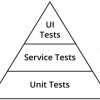Related Content
 |
A Musical Metaphor for Agile Estimation Many explanations of relative sizing in agile estimation fail to capture the mix of knowledge, skill, and effort involved in completing a task. Learning to play a song seems to capture the core ideas of estimation. With a metaphor, it is easier to come up with baselines to estimate against for your own agile sizing. |
|
|
|
Agile Collaboration on Remote Teams The first value in the Agile Manifesto is “Individuals and interactions over processes and tools,” and for many teams, being located in the same place facilitates these interactions. However, being part of an effective, collaborative team is less about location than it is about motivation and good practices. |
|
 |
6 Signs Your Agile Project Isn’t Really Agile There's a trend of organizations declaring they are agile without actually changing how they develop software. Declaring that an apple is an orange doesn’t make it so. These six key indicators can help you determine whether your agile project isn’t really agile after all—and give you some solutions to help. |
|
|
|
What to Keep in Mind If You Want to Be Persuasive To successfully persuade someone of something, it’s important to keep in mind how you come across to others—when you’re trying to persuade and when you’re not. It's a good idea to build up trust and credibility before you need something, listen to others when they're in need, and think about tailoring your message. |
|
 |
5 Reasons You Should Have More Unit Tests The test pyramid is a valuable visual in agile. In particular, it argues that unit tests should make up the majority of tests, and while agile teams recite this principle, it is often not clear why it is so important. Here are five reasons unit tests should make up the majority of tests written for an application. |
|
 |
Feature Branching Is Not Evil Some people believe branching and pull requests are inherently bad. True, branching done poorly can slow down a team, but advocating for avoiding branching altogether can lead you to ignore the more important goal of an agile process: rapid integration of changes. First, make sure you're considering the right metrics. |
|
 |
The Premortem: Planning for Failure While a postmortem, or retrospective, is done after a project is completed, a premortem is done before the project starts as a way to imagine that the project failed and to explore what went wrong. You list every possible thing that can go wrong, then devise solutions to the most probable risks—before you need them. |
|
 |
Creating a Cohesive Culture in a Distributed Organization When organizations are distributed across multiple locations, it brings questions about how much each location should have a unique identity relative to the larger company. While a theme of “we are one” is common, it’s better to embrace the differences and work toward being a cohesive group that celebrates diversity. |




